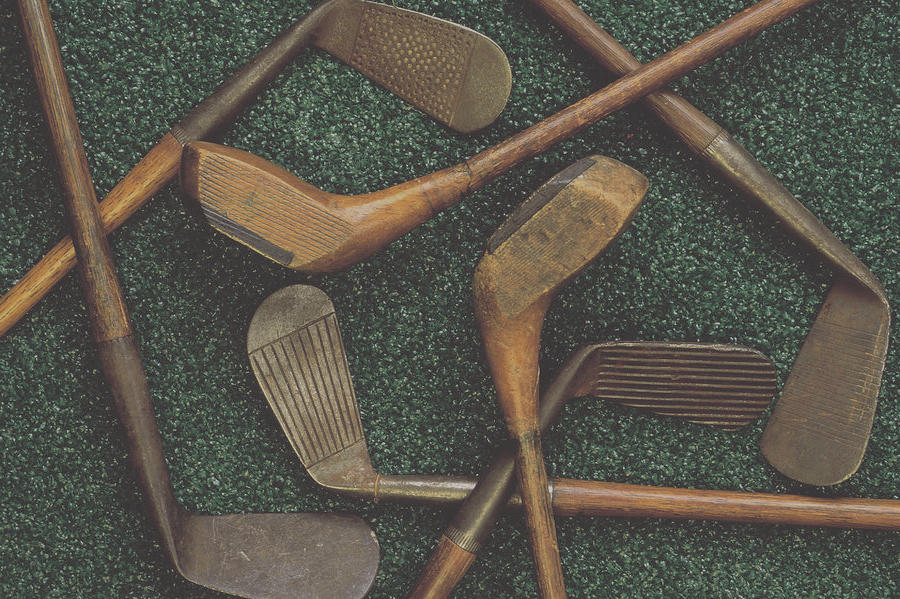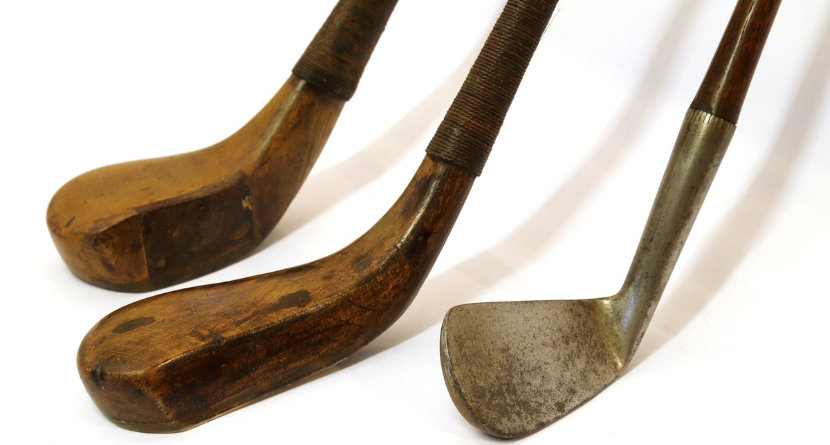Golf has Changed Drastically Since it was Invented & so Has the Equipment

Golf is one of the oldest modern games as it dates all the way back to 15th century Scotland. It has evolved again and again into the game of golf that we know today. As the game of golf changed and evolved, golf clubs experienced major changes as well. The evolution of golf clubs has helped revolutionize the game of golf and made it the sport we all know and love today.
The Earliest Clubs

The earliest golf clubs of course appeared in the 15th century as well and were crafted entirely of wood. There was no specific silhouette that defined a golf club, crafters simply made whatever they wanted and thought would be a good golf club. Clubs were likely made by the golfer as there are no records of clubs being commissioned until King James IV commissioned William Mayne. William Mayne was then made the Royal Club Maker and likely went on to craft many sets of clubs. At this time a set of golf clubs included longnoses, grassed drivers, spoons, niblicks, and a putting cleek. These clubs were fragile and expensive due to the weak materials and the time needed to be crafted. This resulted in golf not being much of an accessible game and was instead reserved for the higher class.
The First Changes

The first step in the evolution of golf clubs was seen when club makers began to experiment with different materials to increase the durability and distance of clubs. Clubmakers were experimenting with different materials on the club face including leather, metal, and bone fragments. In 1618 the featherie golf ball was the new standard despite it being quite fragile. At this time it was possible to forge iron into the wooden club heads but it was uncommon due to the fragile nature of the featherie ball. Around 1750 the world of golf saw the first club heads made entirely of iron. By 1826 hickory wood became the standard for shafts due to its impressive durability.
The Industrial Revolution Changes the Evolution of Golf Clubs

By the 1870s factories were able to mass-produce iron clubs. This pushed the blacksmiths out of business as the factories could make them cheaper, faster, and with more consistency. The 20th century saw a lot of experimentation with club design but there were no significant changes besides the introduction of grooves on the clubface. In 1908 it was discovered that adding groves to the club face created more backspin and caused the ball to fly further.
It wasn’t until 1925 that the steel shaft was introduced and golf clubs began to reassemble what we have today. It was common for a golfer to carry roughly 20-30 clubs in their bag until 1939. With the introduction of much stronger and more durable full metal clubs, The Royal and Ancient Golf Club of St Andrews (the governing body of the game of golf) decided to introduce the 14-club rule. When this rule was introduced, clubs adopted the numerical names that we are familiar with and got rid of the whimsical names like “niblicks” and “longnoses.”
Woods still had wooden club heads until 1991 when Callaway Golf introduced the “Big Bertha” driver. It was simply the best driver on the market and metal club heads became the expectation for woods as well. The last major change in the evolution of golf clubs occurred in the early 2000s with the introduction of hybrids. Their name comes from the fact that they are a hybrid between a wood and an iron. Golfers quickly adopted the hybrid clubs as they were designed to replace long irons that were notoriously hard to use.
Golf Cubs Today

The evolution of golf clubs has come to a halt as there have not been many significant changes in the design of golf clubs for roughly two decades. Manufacturers will continue to make small adjustments and find better materials to maximize the performance of clubs. The evolution of golf clubs is never ending and it is guaranteed that our current golf clubs will be obsolete years from now. Shop the newest clubs the industry has to offer at the Haggin Oaks Golf Super Shop or online at Morton Golf Sales.
If you would like to hear about more golf history, subscribe to Golf In The City Of Sacramento.


Discover The Fascinating History Of Golf Clubs
[…] These clubs were made of wood and started a new chapter in golf equipment. King James IV made William Mayne the Royal Club Maker. This move showed how important golf clubs were in the sport’s culture4. […]